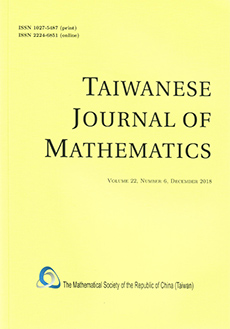Abstract
For positive integers $k$ and $d\geq 2$, a $k$-$S(d, 1)$-$labelling$ of a graph $G$ is a function on the vertex set of $G$, $f:V(G)\to\{0,1,2,\cdots,k-1\}$, such that $$ |f(u)-f(v)|_k\geq\left\{\begin{array}{ll} d &\mbox{ if }\ d_G(u,v)=1;\\ 1 &\mbox{ if }\ d_G(u,v)=2,\end{array}\right. $$ where $|x|_k=\min\{|x|,k-|x|\}$ is the {\em circular difference} modulo $k$. In general, this kind of labelling is called the $S(d,1)$-$labelling$. The $\sigma_d$-number of $G$, $\sigma_d(G)$, is the minimum $k$ of a $k$-$S(d,1)$-labelling of $G$. If the labelling is required to be injective, then we have analogous $k$-$S'(d,1)$-$labelling$, $S'(d,1)$-$labelling$ and $\sigma _d^\prime(G)$. If the circular difference in the definition above is replaced by the absolute difference, then $f$ is an $L(d,1)$-labelling of $G$. The $span$ of an $L(d,1)$-labelling is the difference of the maximum and the minimum labels used. The $\lambda_d$-number of $G$, $\lambda_d(G)$, is defined as the minimum span among all $L(d,1)$-labellings of $G$. In this case, we have the corresponding $L'(d,1)$-labelling and $\lambda_d'(G)$ for the labelling with injective condition. We will first study the relation between $\lambda_d$ and $\sigma_d$ as well $\lambda_d^\prime$ and $\sigma _d^\prime$. Then we consider these parameters on cycles and trees. Finally, we study the join of graphs and the multipartite graphs.
Citation
Kun-Feng Wu. Roger K. Yeh. "LABELLING GRAPHS WITH THE CIRCULAR DIFFERENCE." Taiwanese J. Math. 4 (3) 397 - 405, 2000. https://doi.org/10.11650/twjm/1500407256
Information





